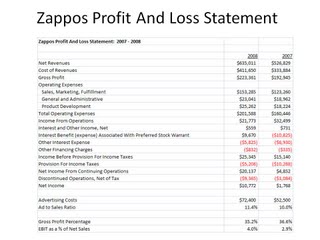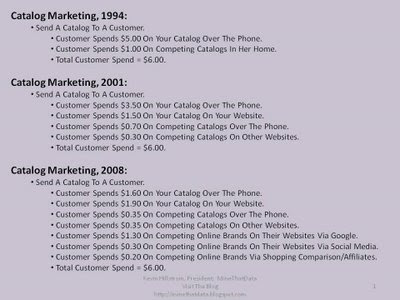This Week In Business: Zappos Twitter Strategy
Well, you can't throw a Pottery Barn catalog without hitting somebody who promises business success on Twitter.
I find the whole Twitter thing vexing. My own presence (follow me here) finally found a groove ... more than 1,000 followers discussing various questions I ask on a daily basis.
But enough about me. You frequently ask me how you might use Twitter to increase sales.
So why don't we look to the leader, Zappos, to see how their folks use Twitter.
As you may already know, Zappos gives considerable flexibility to employees using social media, and allows you to see what all employees are currently talking about. So let's take a brief look at a few employee comments.
Customer Service --- Click Here For More: @Zappos_Service
- @jefframone Thank you for shopping with us! I hope you enjoy your shoes =)
- @hevipetter Did you know that we also carry handbags to go with your cute boots? http://www.zappos.com/bags
- @trappedinabay Please let us know if you need any assistance! We are here for you 24/7 by calling 1-800-927-7671.
- @kooskoos Did you know that we also sell clothing to go along with your shoes? http://www.zappos.com/clothing
- @Delirium7 I'm sorry the heels didn't work out for you. Please give us a call at 1-800-927-7671 if you need further assistance.
- @kastner We apologize for any inconvenience. That site was just a test and we decided not to go forward with it at this time.
- @drudy We love you too! Thanks for shopping with us!
- @_cyndi I love these shoes! I have the same ones in the White/Carbon/Orchid. Enjoy!
- @denimmafia Actually here is the real link to our sale section :-) http://www.zappos.com/sale
- @marysam I'm sorry that we are currently out of stock in your size. Please DM (direct message) me your email address and I will be happy to help!
- @tenaciouscb We apologize for any inconvenience. Please DM me if you are still experiencing any problems with your account or the site.
- This is Josh signing off and wishing you all a good night! We'll be back here to WoW tomorrow morning!
- Goodmorning Everyone! Tasha here, ready to WoW you this am!
Learn anything from the thirteen tweets outlined here?
Honestly, read the comments. There is nothing magical here. This isn't about Twitter. This isn't about Social Media. This is 100% about human beings offering customer service, about human beings being humble, about human beings selling merchandise. Remember selling? That's our job, as marketers. We are supposed to sell stuff.
And yet, it is the human element of this, it's the service element that may be judged by some to be magical --- not the social media marketing channel. How many of the businesses we work for would be willing to publicly apologize for being out of stock on an item? How many of the businesses we work for would be willing to publicly apologize for testing a new site out and disappointing a customer in the process?
The human element will cause some problems, too. Read a few of the tweets from Zappos employees, tweets that take on a different tone:
- @bassred says "Hey T-Mobile. Now on day five without data service. your live chat is unavailable. thinking customer service is not very important to you."
- @seanyboysp says "At tropical smoothie cafe with the wifey and baby boy.. maverick just loves smoothies haha"
- @graves says "Note to self... don't try to buy Rolo's again from the vending machine"
Oh, you'll read about politics and boyfriends and kids soccer photos and Brett Favre and wars while going through employee tweets. Maybe you are more than happy to allow your employees to share their lives with your customers. Maybe this is shocking to you, and represents the absolute last thing you'd ever do, maybe you think this represents a branding catastrophe.
Remember what we talked about on Monday? When I run Multichannel Forensics and OMS analyses for clients, I continually see that interaction with humans leads to customers with increased long-term value.
Clearly, we focus on channels, like Twitter. But this has nothing to do with Twitter or Social Media or marketing channels. It has everything to do with human beings pleasing customers. What can we learn from their style of human interaction that we might be able to leverage?







